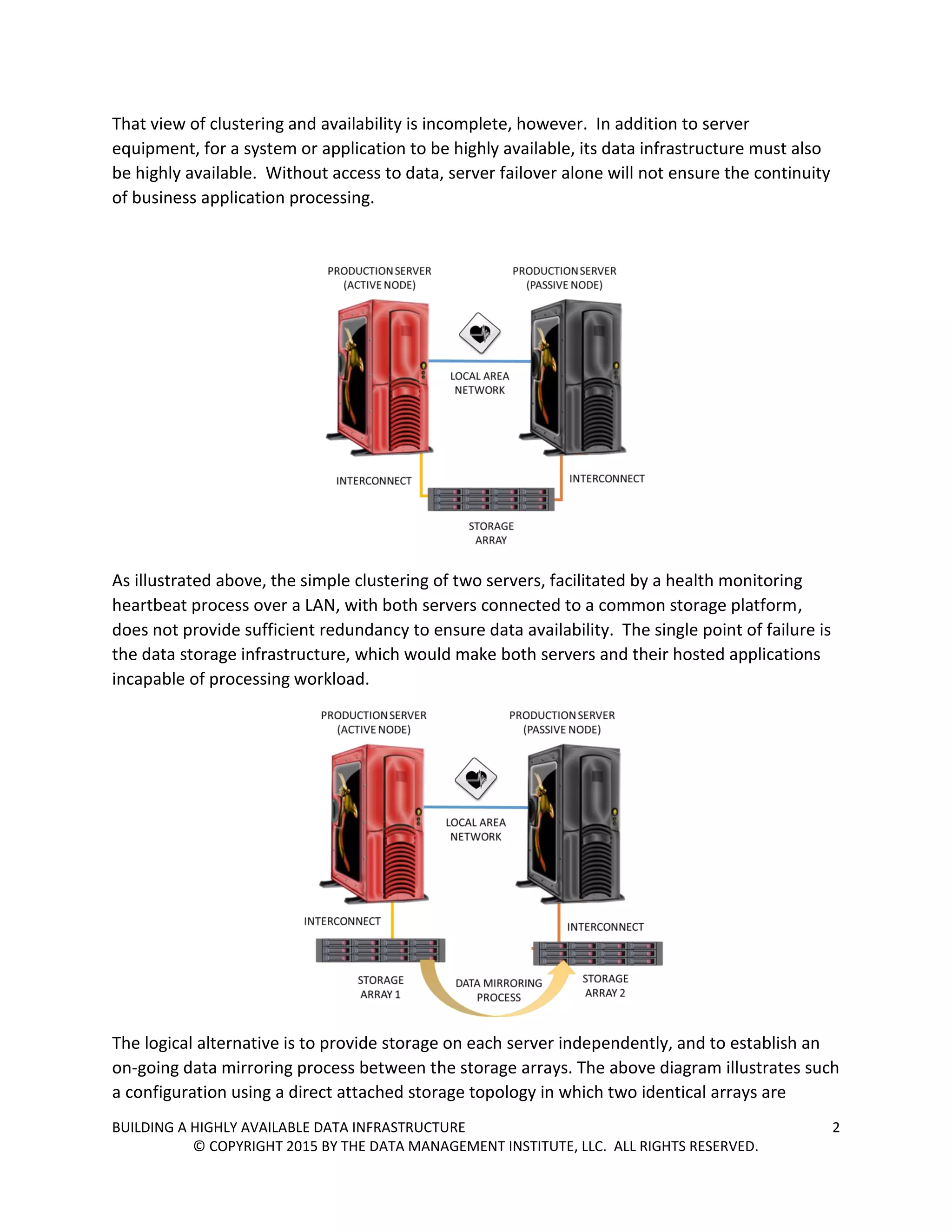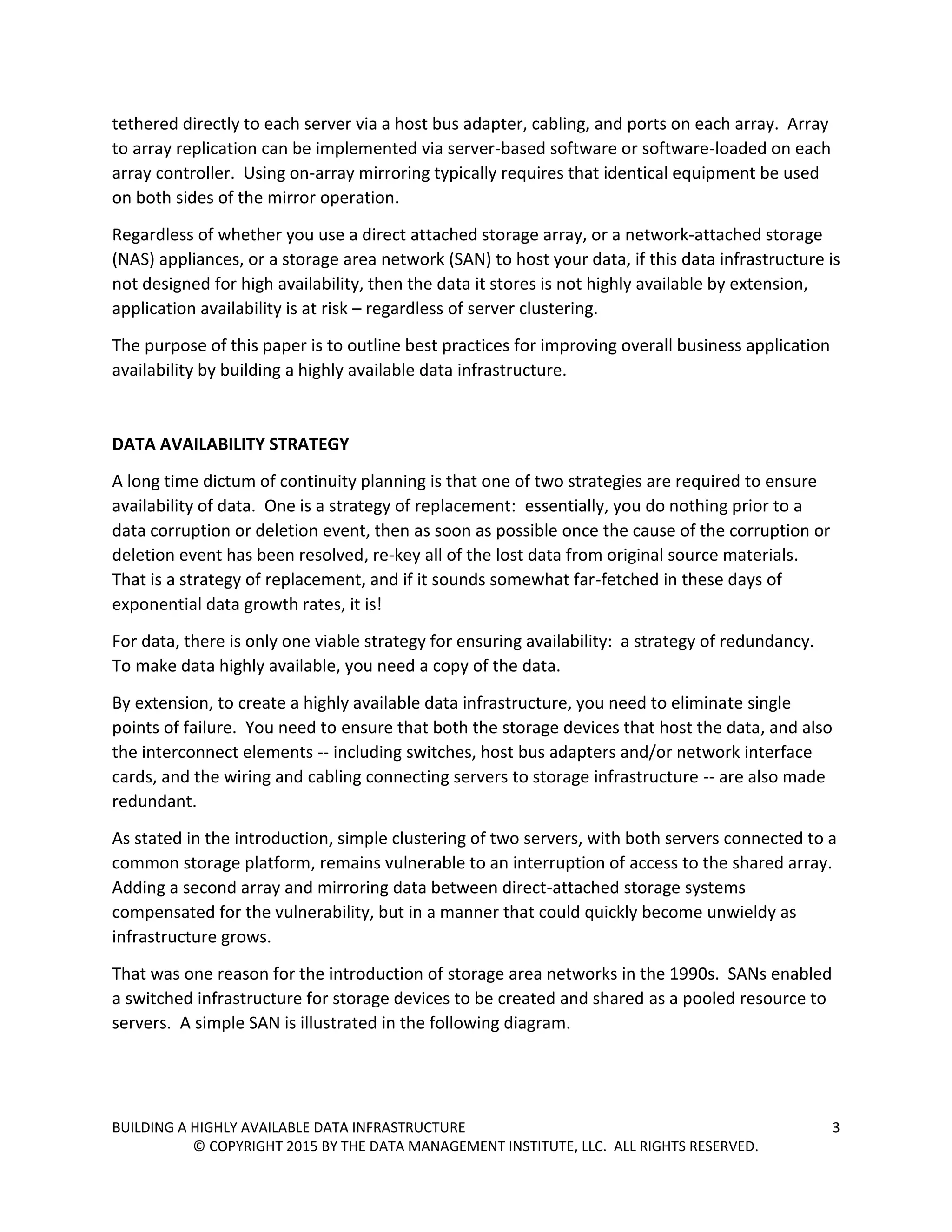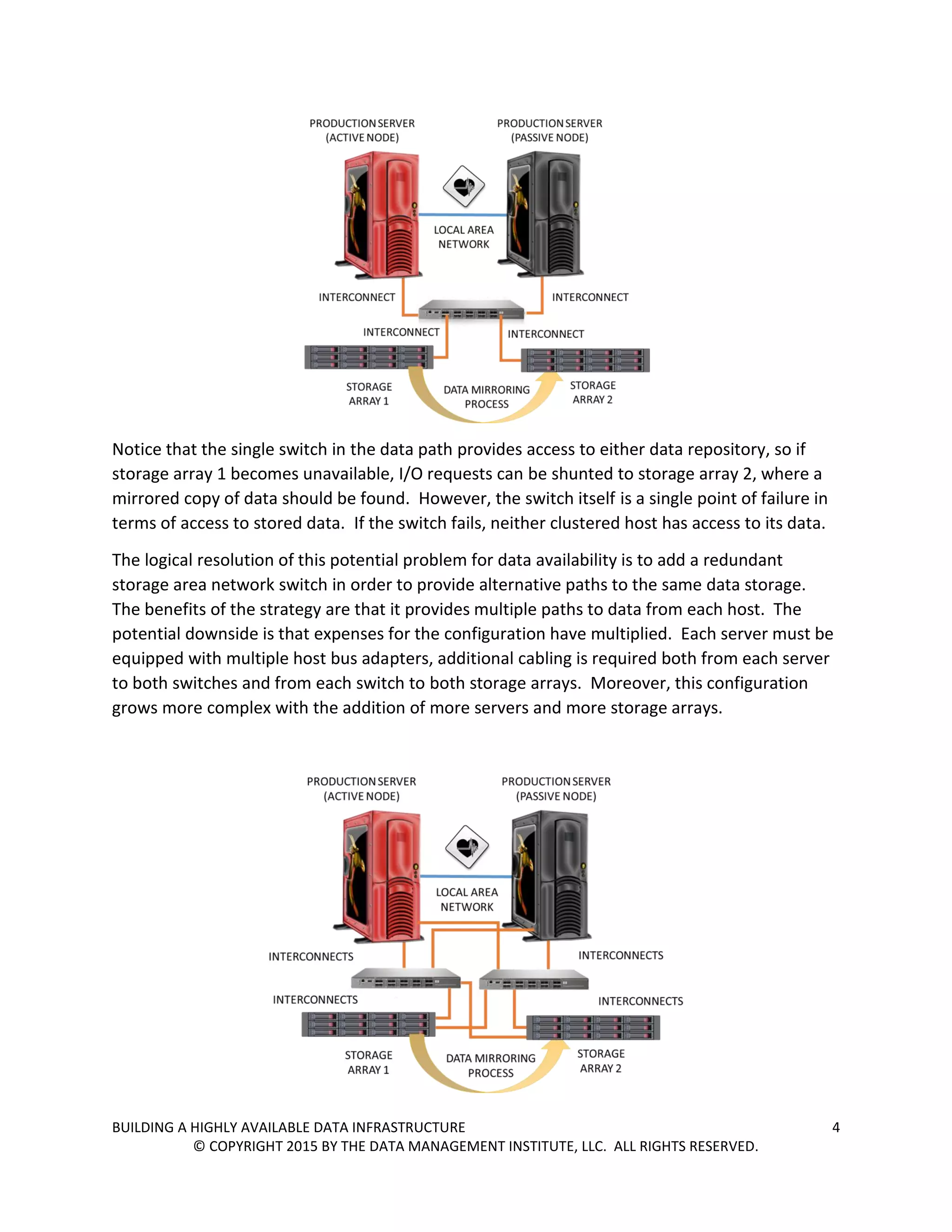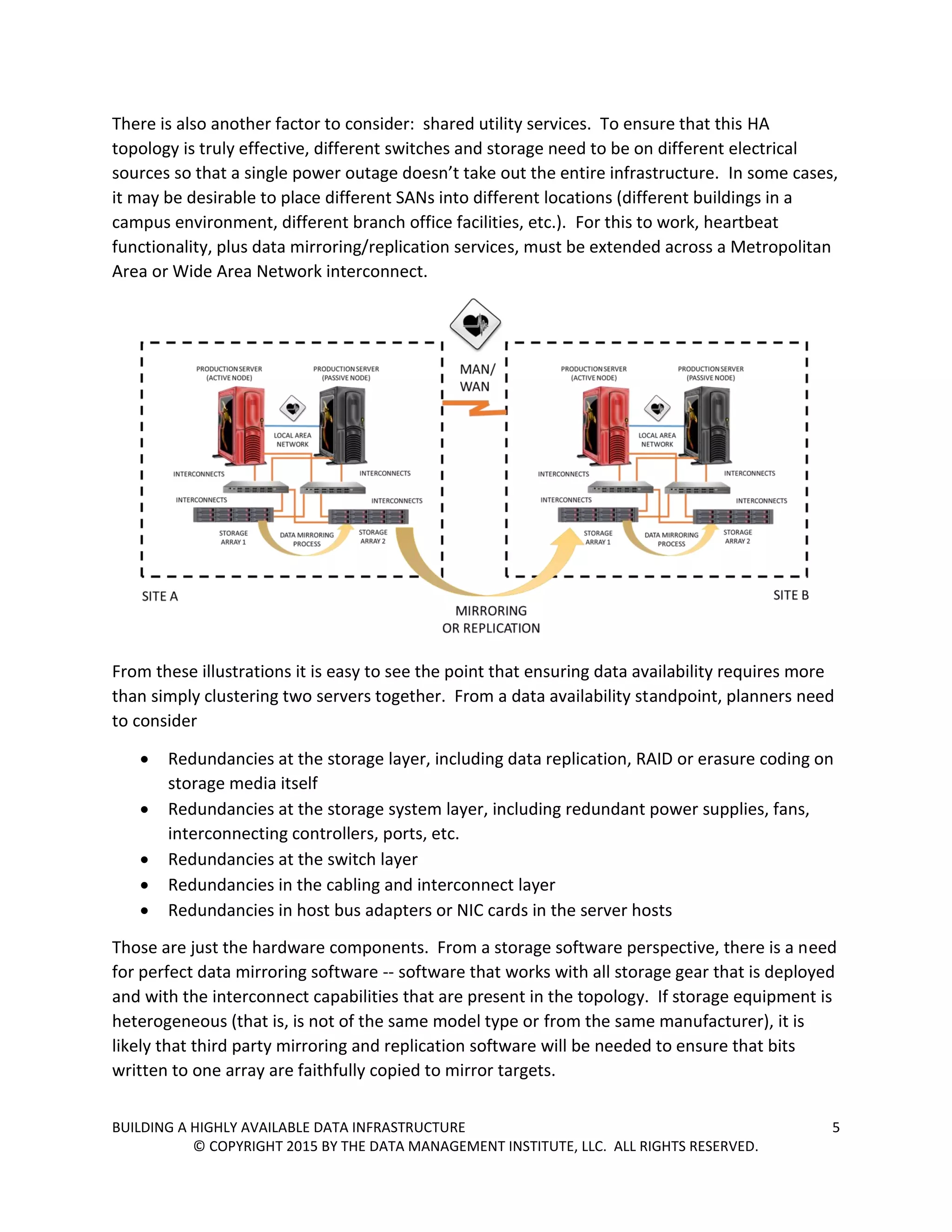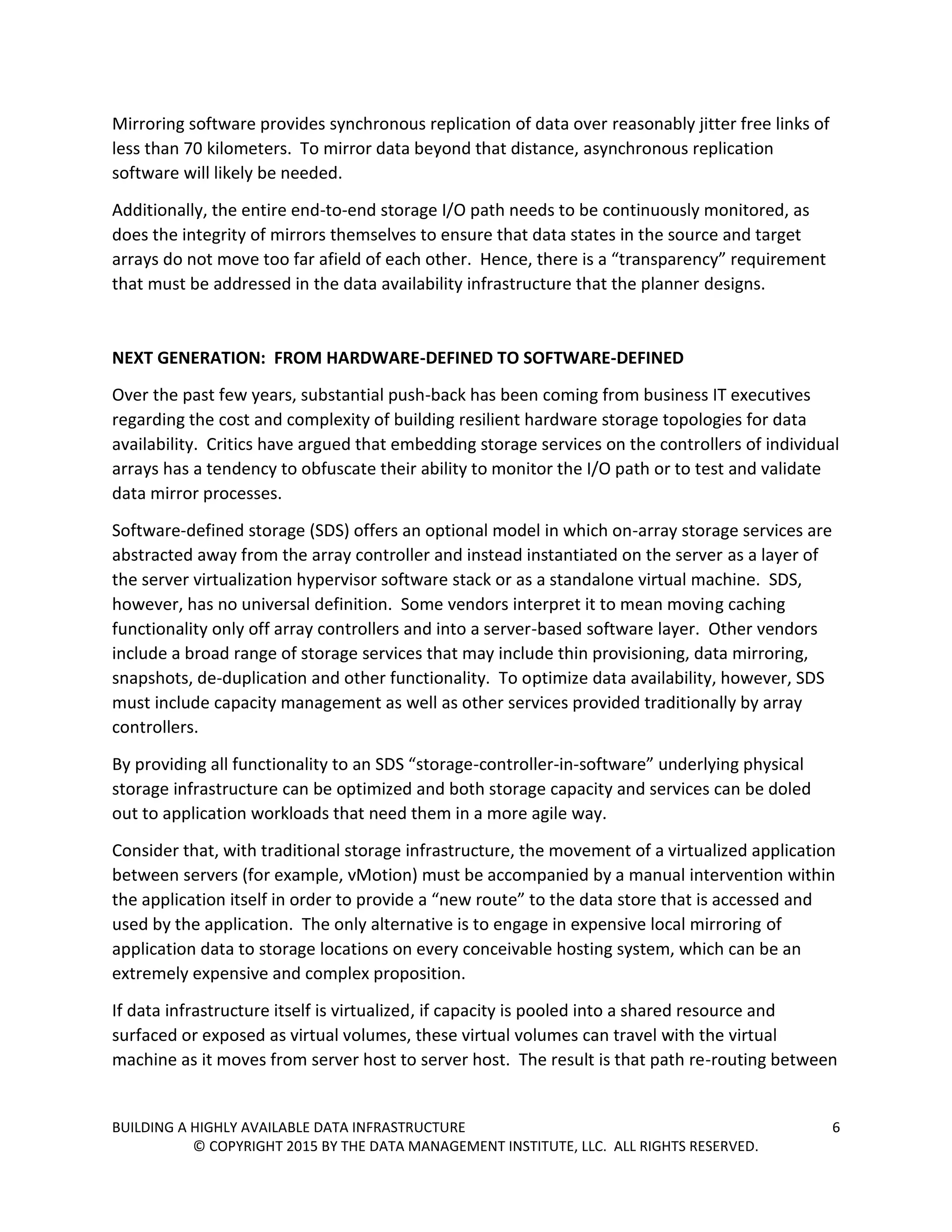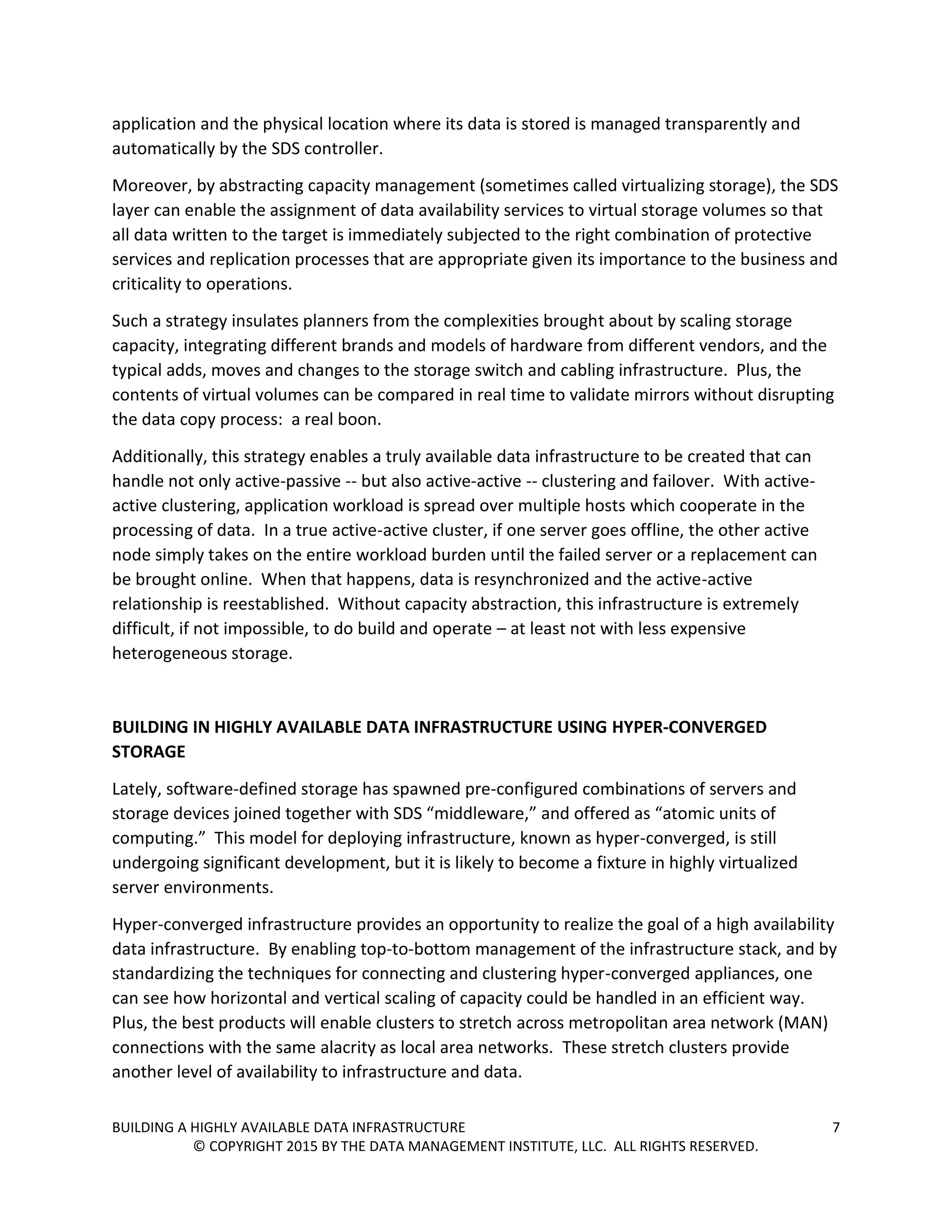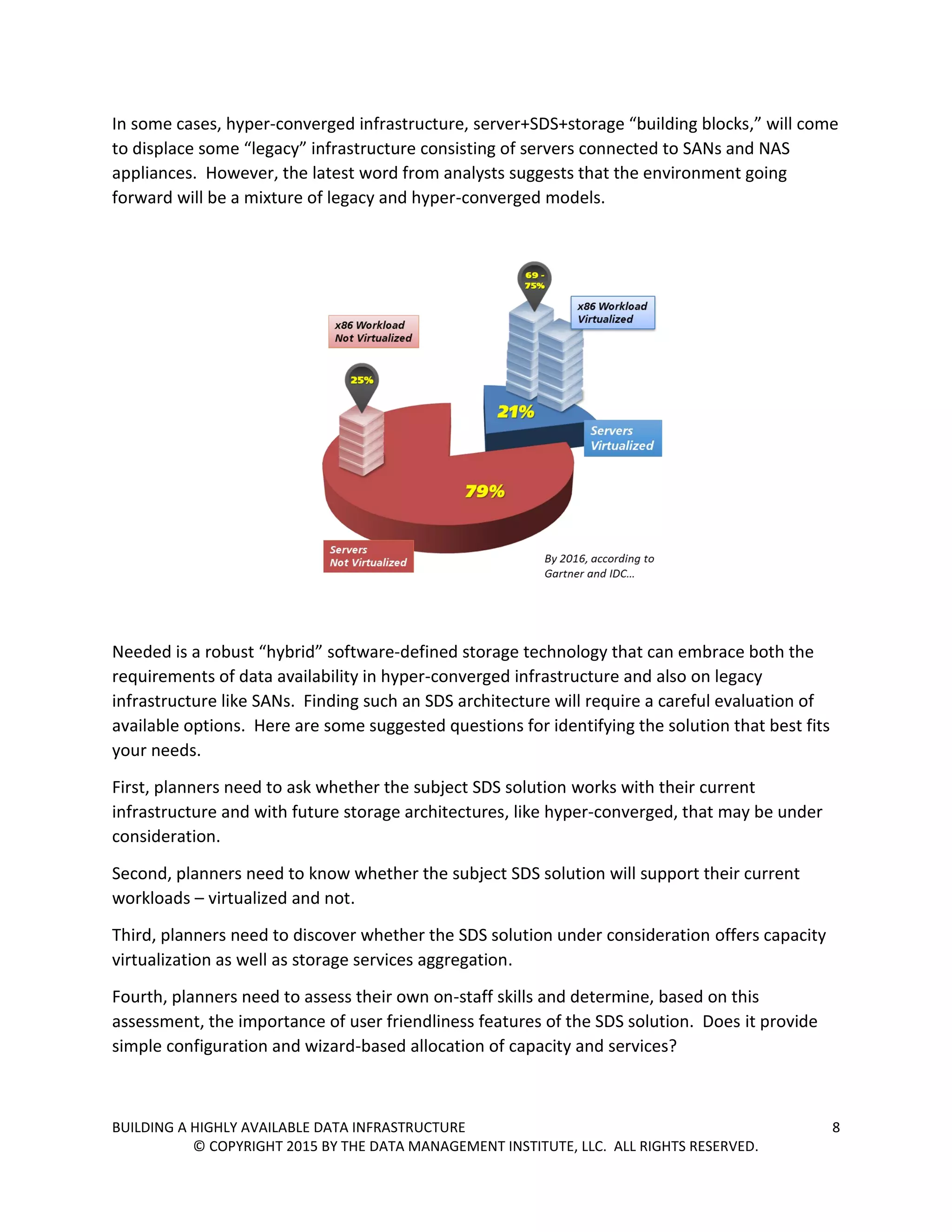The document outlines strategies for building a highly available data infrastructure, emphasizing the need for both server and data redundancy to ensure application continuity. It critiques the traditional clustering approach as insufficient, advocating for technologies like storage area networks and software-defined storage to eliminate single points of failure. Additionally, it discusses the emerging hyper-converged infrastructure, which combines storage and computing for improved scalability and management in modern virtualized environments.

